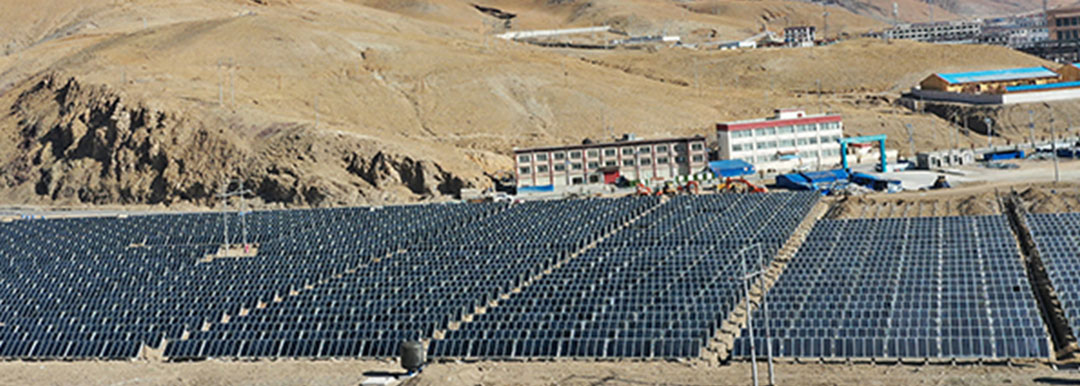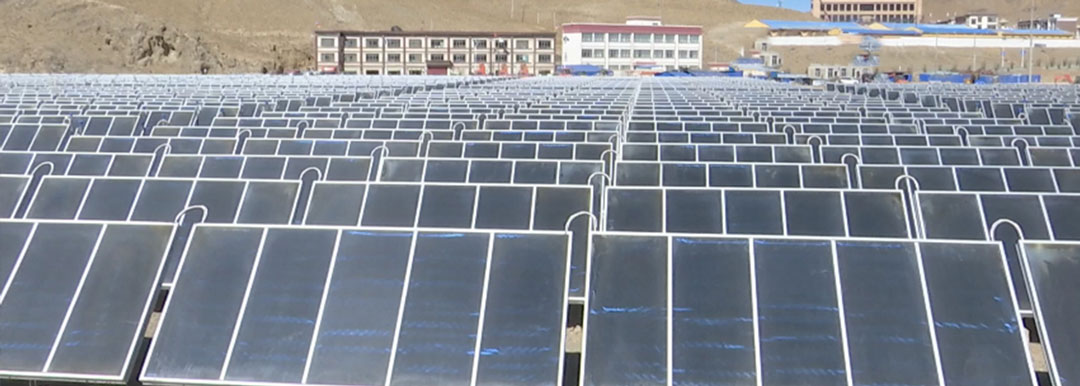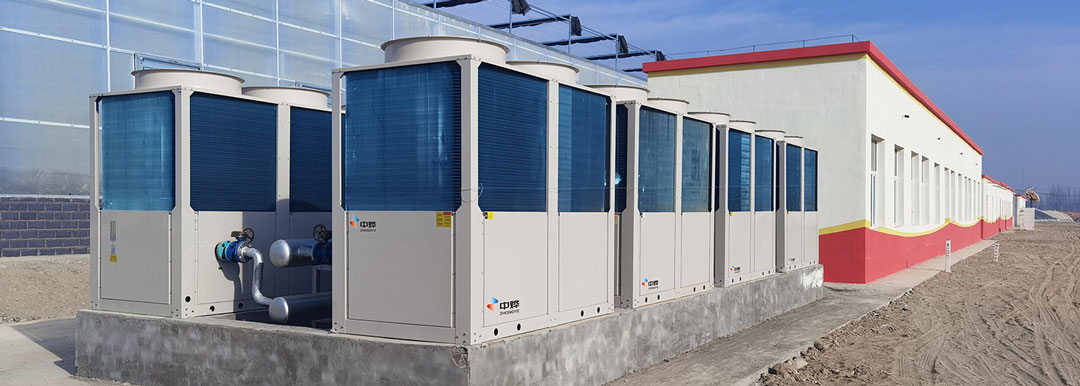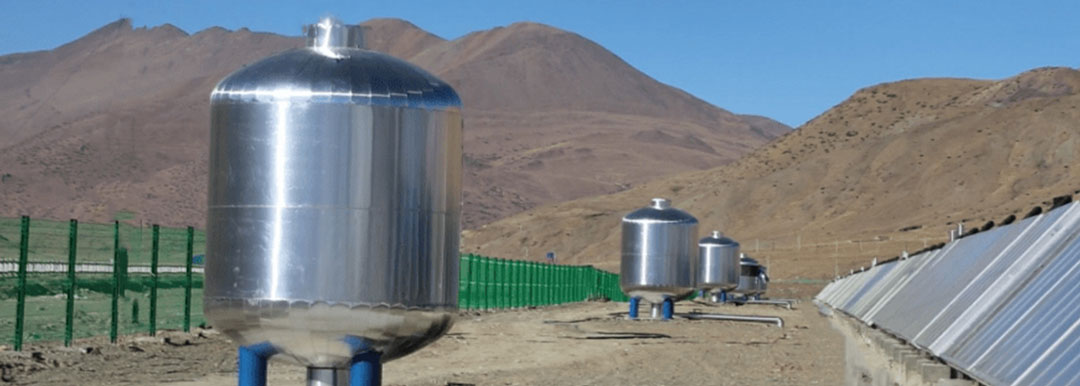Solar Central Heating Project in Saga County: Bringing a Warm Transformation to the Plateau
In the northwest of Shigatse, Tibet, lies Saga County, a border county with an average altitude of over 4,900 meters. Characterized by thin air, harsh alpine climate, no distinct four seasons (long winters and short summers), it is a typical plateau climate. For a long time, every winter, Saga County plunges into severe cold, with the minimum temperature dropping to around -20℃. In the past, local residents generally relied on burning coal or cow dung for heating. This traditional heating method not only posed significant safety risks but also caused poor air quality due to smoke emissions. Moreover, large-scale logging of firewood for fuel exerted heavy pressure on the local fragile ecological environment, making ecological concerns increasingly prominent. Therefore, accelerating the solution to heating issues and improving residents’ living conditions became an urgent expectation of cadres and the masses, and a livelihood project that needed to be advanced urgently.
In May 2019, a solar central heating project carrying numerous expectations broke ground in Saga County, with a total investment of approximately 154 million yuan. Covering four major parts—heat source plant, heating pipeline network, heating terminal construction, and building energy-saving renovation—the project aimed to fundamentally address Saga County’s winter heating predicament. Despite its harsh climate, Saga County is endowed with abundant solar resources and large daily temperature differences, creating unique conditions for the application of solar heating technology. The project team fully leveraged this advantage, deciding to use solar energy as the main heating source to build a clean, efficient, and sustainable heating system.
During the project advancement, various challenges emerged one after another. Saga County’s extreme daily temperature difference—scorching sun during the day and plummeting temperatures at night—placed extremely high demands on building materials and construction techniques. The short construction period was another major challenge: only a few months each year were suitable for construction, requiring precise control of the project schedule. Additionally, the lack of local meteorological data introduced uncertainties into the design and commissioning of the heating system. Faced with these difficulties, the Party Committee and Government of Saga County took the "Never Forget the Original Intention, Keep the Mission in Mind" theme education as an opportunity to take proactive actions, strengthen responsibility, take the initiative, and provide on-site services. The project construction enterprise also rose to the challenge, reversed the construction schedule, and worked diligently. To ensure the project’s scientificity and advancement, the constructor invited authoritative domestic institutions in solar energy research and application—Tsinghua University and Beijing Zhonghuan Hechuang Environmental Protection Energy Technology Co., Ltd.—to provide technical support. Professional teams went deep into Saga County to collect detailed meteorological data, conduct a comprehensive survey of users’ house insulation conditions, and build a simulation platform for relevant tests.
After unremitting efforts, good news arrived on November 21, 2019: the solar central heating project began trial operation, three months ahead of the original plan of achieving heating supply in February 2020. It successfully delivered warmth to primary and secondary schools, kindergartens, hospitals, government agencies, and other places, solving the urgent need for heating. With a large scale, the project built 24,000 square meters of solar collectors. Arranged neatly like huge energy harvesters, they efficiently absorbed solar heat. The supporting 4,000-cubic-meter hot water storage tank could store excess heat during the day for use at night or on cloudy days, ensuring stable heating. Three 1MW water-source heat pumps and three 1MW oil-fired boilers served as auxiliary heat sources, which would start promptly when solar energy was insufficient to ensure uninterrupted heating. The 13.74-kilometer-long heating pipeline network (with the farthest section reaching 2.43 kilometers) was like warm arteries, transporting heat to all corners of the county and connecting 68,246 indoor heating terminal radiators in buildings, bringing warmth into every household.
In terms of heating technology, the project also demonstrated outstanding innovation. On the heating side, it realized time-sharing and zoned heating for buildings. Through an intelligent control system, it could accurately match heat according to the heating needs of different buildings and optimize the system’s heat distribution reasonably. This measure effectively avoided common problems in solar heating systems, such as excessive heating and long-term operation of auxiliary heat sources, greatly improving energy utilization efficiency. Currently, the project is building an online monitoring and diagnosis system based on the Internet of Things and big data technology. Once completed, it will conduct real-time monitoring of operating data, realizing online diagnosis, remote monitoring, and adaptive control of the system, further enhancing the intelligence level and stability of the heating system.
The successful operation of Saga County’s solar central heating project has significantly improved the living conditions of local residents, cadres, and staff. "With central heating in the house, it’s warm inside. There’s no more ash floating around, and I don’t have to get up in the middle of the night to add fuel," said local resident Sonam Tsering with a smile, his words full of satisfaction with the new heating method. Guo Guangcheng, Deputy Secretary of the Saga County Party Committee and County Magistrate, stated that central heating not only greatly improved the office and living conditions in the county seat, reflecting the care and concern of the Party Central Committee for grassroots cadres, but also further inspired the determination and motivation of cadres and the masses to follow the Party’s leadership and listen to the Party’s words. This project is not only a "livelihood project" and "warmth project" but also an "environmental protection project." It has set a model for improving people’s livelihoods and protecting the ecology in Tibet, enabling Saga County to embrace a warm transformation on the cold plateau.








